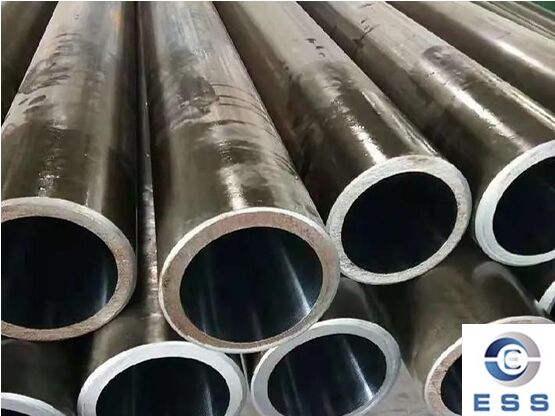
As an important part of the hydraulic
system, the welding quality of hydraulic
tubes is directly related to the safe operation of the entire system.
Therefore, it is crucial to develop a scientific and reasonable hydraulic tube
welding plan.
Preparation before hydraulic piping
welding
Before welding the hydraulic tube, the work
site and equipment need to be strictly cleaned and inspected to ensure that
there are no impurities and pollutants to avoid adverse effects on the welding
quality. In addition, preparation work for steel pipes is also required,
including determining the pipe number, length and elbow angle, and
selecting appropriate pipe materials and welding materials.
Selection of hydraulic piping welding
materials
1. Steel pipe: The steel pipe selected for hydraulic
tubes is generally 20# seamless
steel pipe or Q345B mild
steel tube, and its specifications should meet the design requirements. For
some special-purpose hydraulic systems, such as boiler
tube or heat
exchanger tube, it is also necessary to select steel pipes with
corresponding performance according to their specific working conditions to
ensure the stable operation of the system.
2. Welding materials: Selecting appropriate
welding materials can effectively ensure the quality of the weld. According to
different materials and pipe diameters, there are many choices of welding
materials. Generally, welding wire or welding rod can be selected for welding.
Welding methods of hydraulic piping
1. Gas shielded welding method
Gas shielded welding method is a common hydraulic
piping welding method, which is suitable for pipes with smaller diameters.
Pressure test is required before welding, and the gas is artificially
controlled by valve during pressure test to avoid affecting the pipe weld during pressure test.
2. Arc welding method
Arc welding is a commonly used hydraulic
piping welding method, which can weld pipes with larger diameters. The pipes
need to be cleaned and processed before welding, and the arc welding skills
need to be mastered during welding to ensure the quality of the weld.
Key steps in the welding process
1. Pipeline matching and positioning
Accurately match the hydraulic tubes to be
welded to ensure that the pipeline axis is consistent and reduce welding
deformation. At the same time, use appropriate clamps for positioning to
prevent the pipeline from moving during welding.
2. Preheating treatment
According to the pipe material and
thickness, appropriate preheating treatment is carried out to improve the
plasticity and toughness of the welded joint and reduce the occurrence of
welding cracks. For some materials such as high-strength alloy steel or
thick-walled casing
pipe, preheating is particularly important, which can effectively prevent
problems such as cold cracks during welding.
3. Welding operation
Choose appropriate welding methods and
welding parameters for welding. During the welding process, maintain a stable
welding speed to ensure the quality of the weld. At the same time, pay close
attention to the changes in the welding molten pool and adjust the welding
angle and strength in time.
Post-weld treatment and inspection
After welding, post-weld treatment and
inspection are required, including cleaning of welding marks, hammer test and
non-destructive flaw detection. These works can effectively ensure the quality
and safety of the weld.
1. Perform an appearance inspection to
ensure that the weld surface is flat, free of cracks, pores and other defects.
2. Perform non-destructive testing, such as
X-ray or ultrasonic testing, to detect potential defects inside the weld.
3. Perform pressure testing to verify the
safety of the hydraulic tubes under actual working pressure.
Precautions
1. Pay attention to safety during welding
to avoid accidents.
2. Select appropriate welding materials and
welding methods to improve efficiency while ensuring quality.
3. Perform pre-welding preparations to
ensure the cleanliness and safety of the workplace and equipment.
4. Perform post-welding treatment and
inspection to avoid potential safety hazards.
Conclusion
The welding process of hydraulic tubes is
one of the important technical links in the hydraulic system, which involves
the normal operation of the machine and the safety of personnel. Mastering the
methods and techniques of hydraulic tube welding can improve the technical
level and production efficiency of mechanical engineers. By strictly following
the pre-welding preparations, key steps in the welding process, and quality
inspections after welding, we can effectively ensure the quality and
reliability of hydraulic tube welding.
Read more: Pickling treatment process of hydraulic system pipeline













 Eastern Steel Manufacturing Co.,Ltd not only improve product production and sales services, but also provide additional value-added services. As long as you need, we can complete your specific needs together.
Eastern Steel Manufacturing Co.,Ltd not only improve product production and sales services, but also provide additional value-added services. As long as you need, we can complete your specific needs together.










